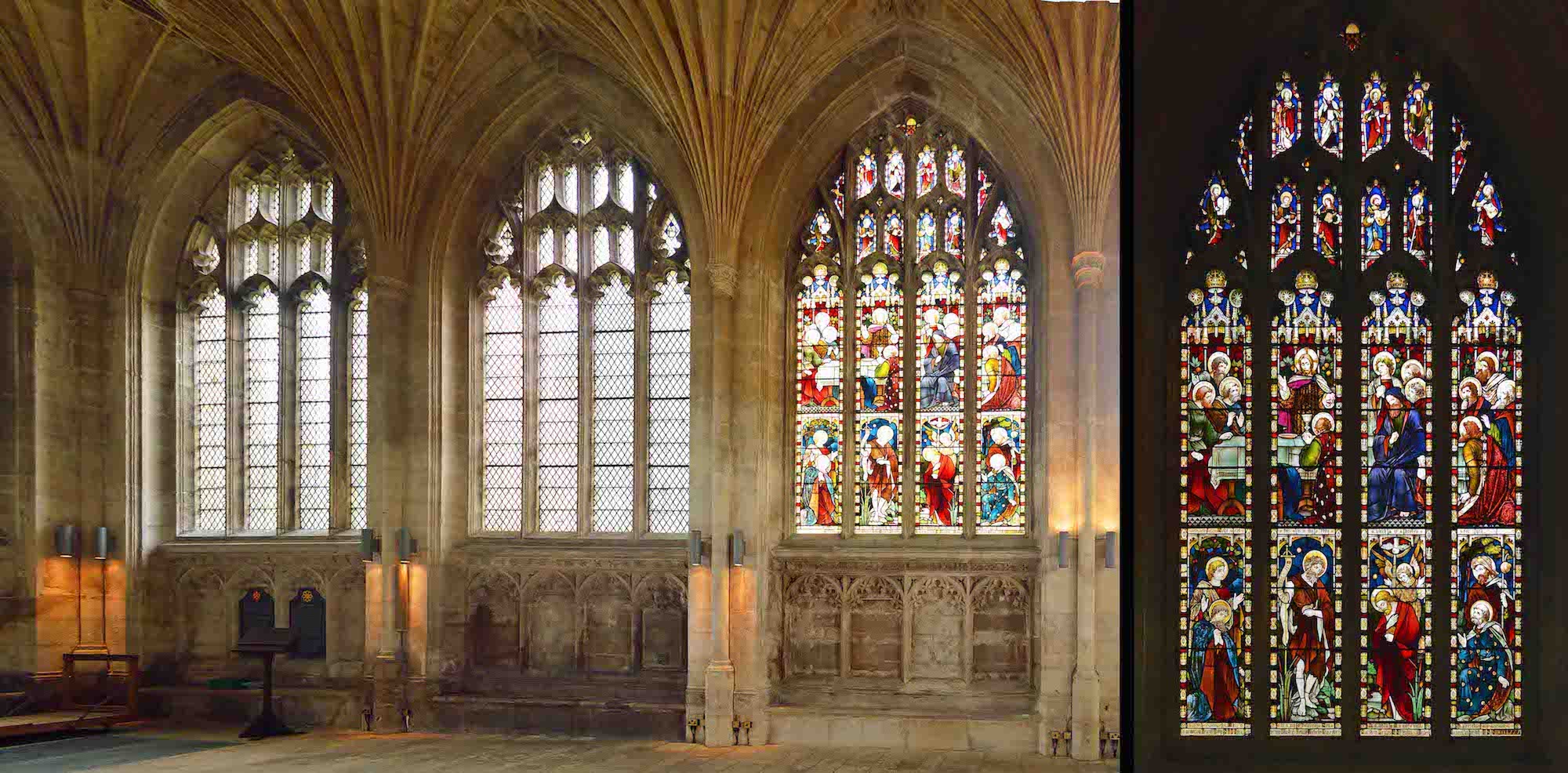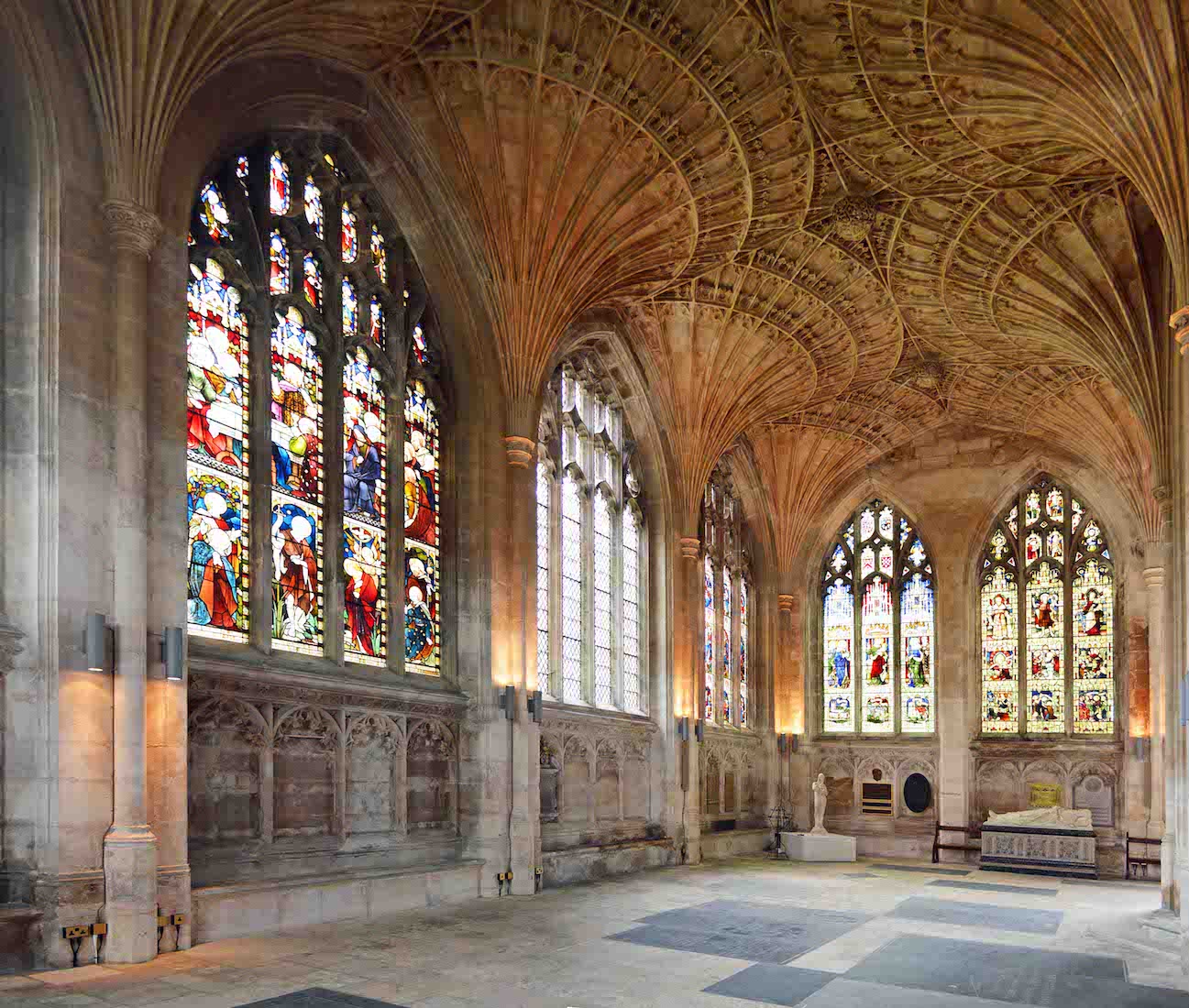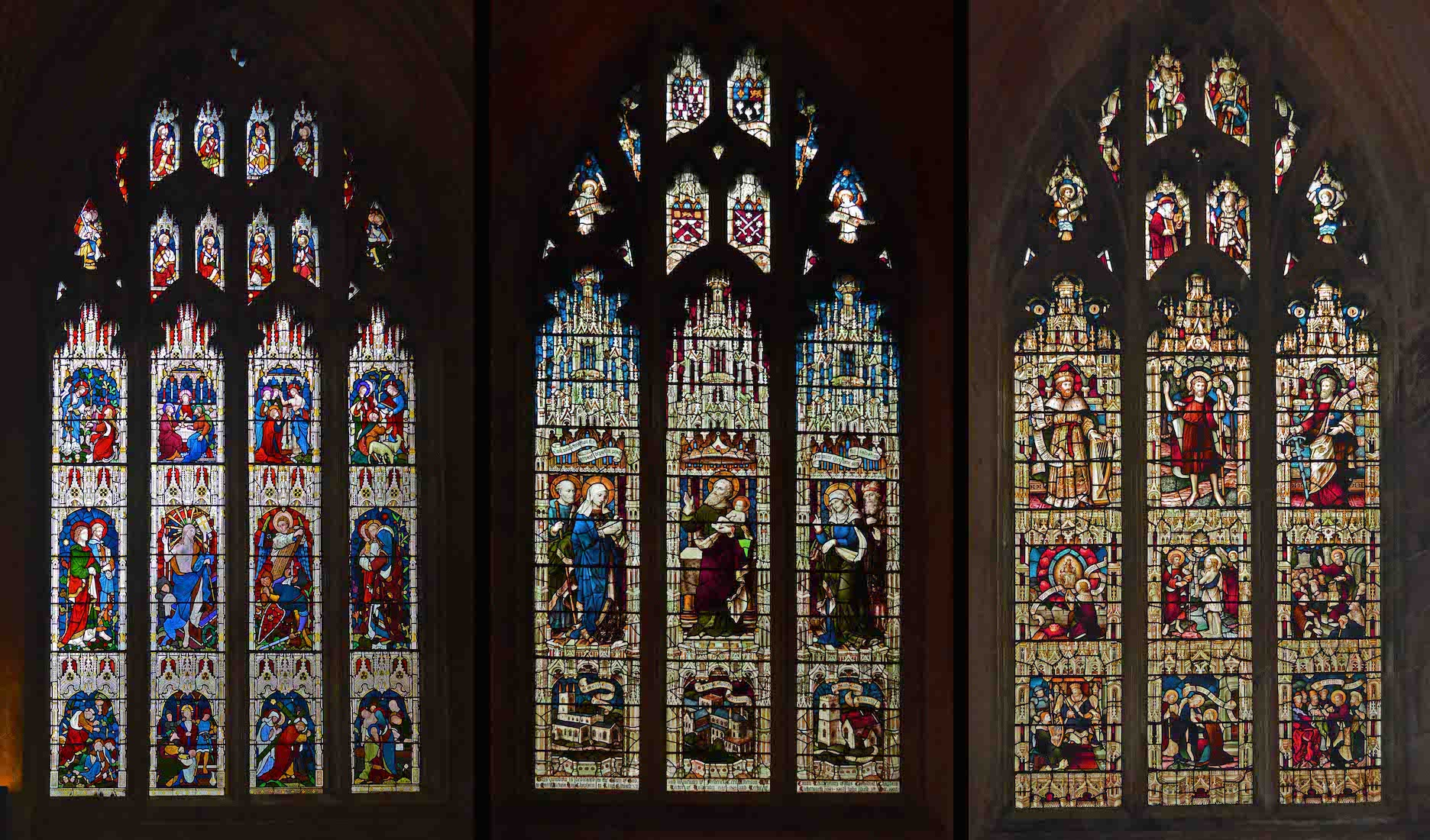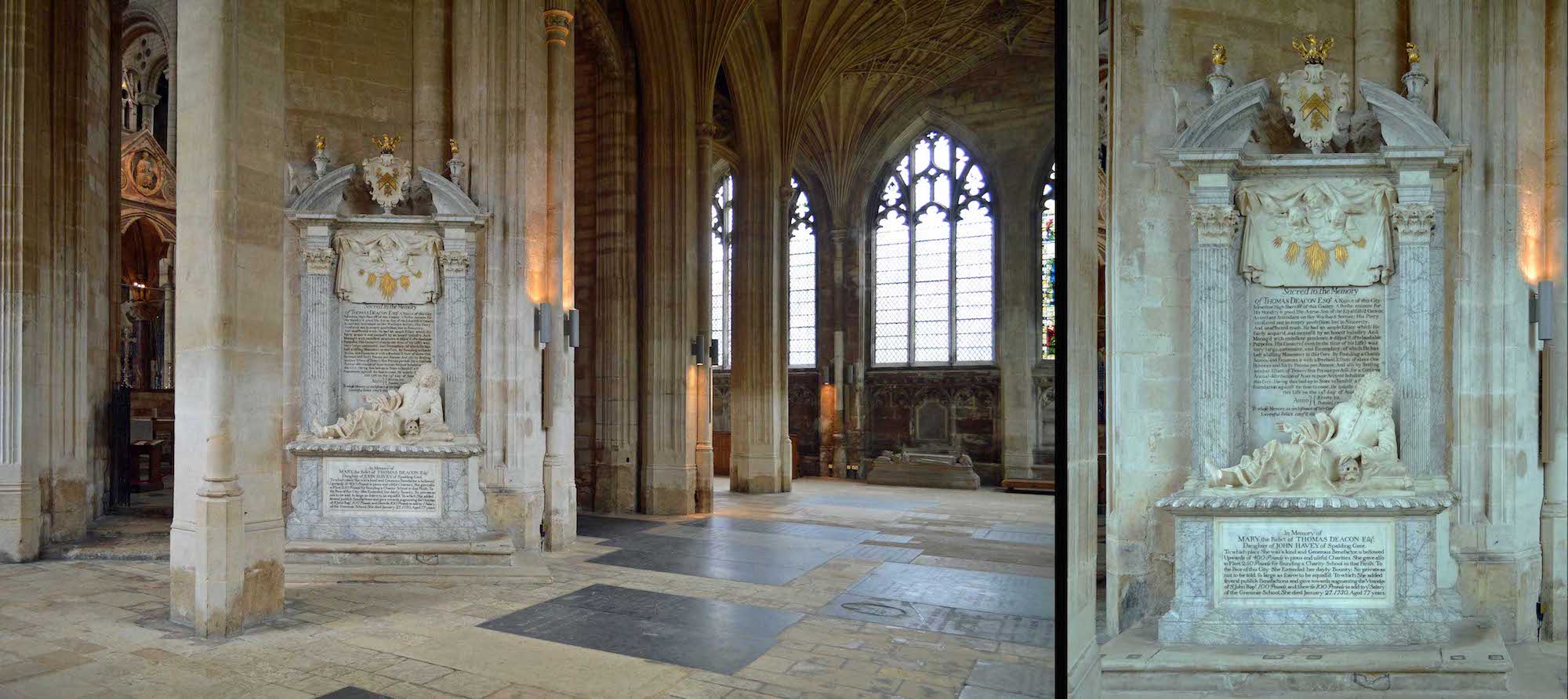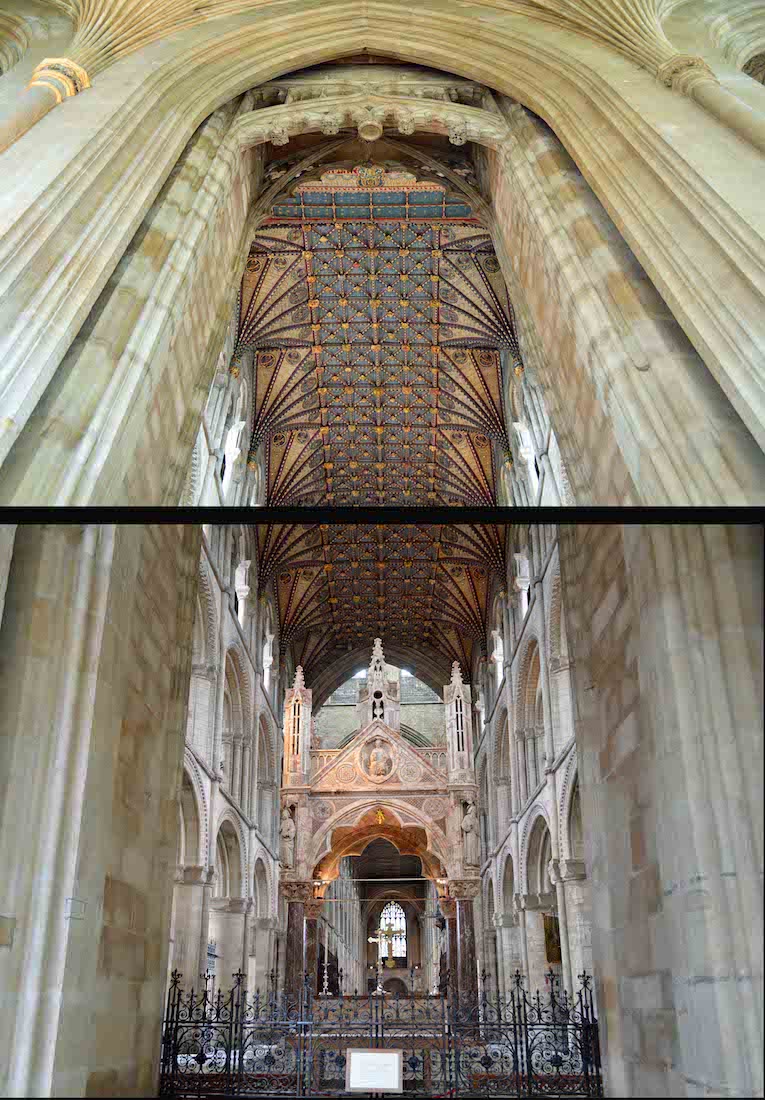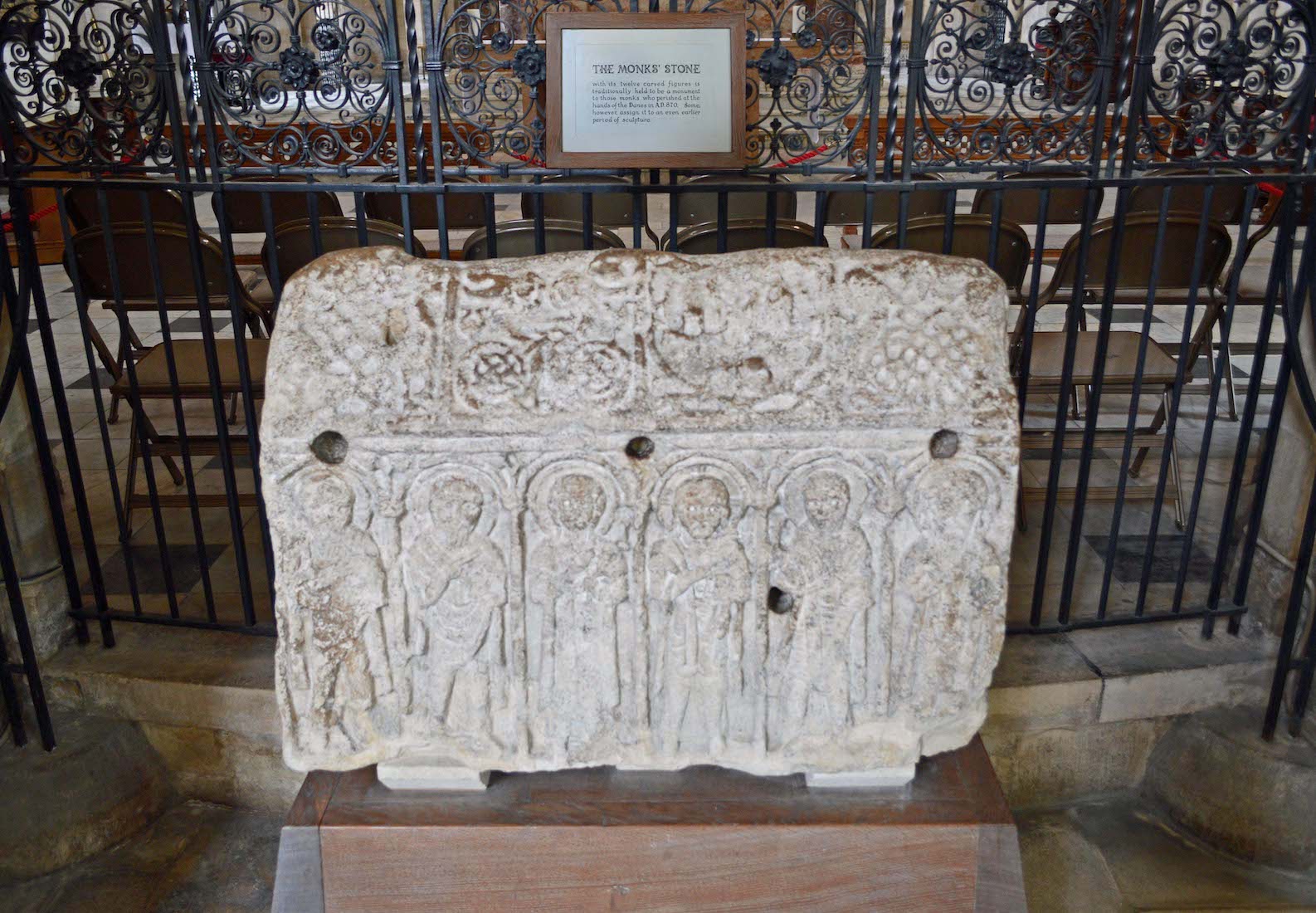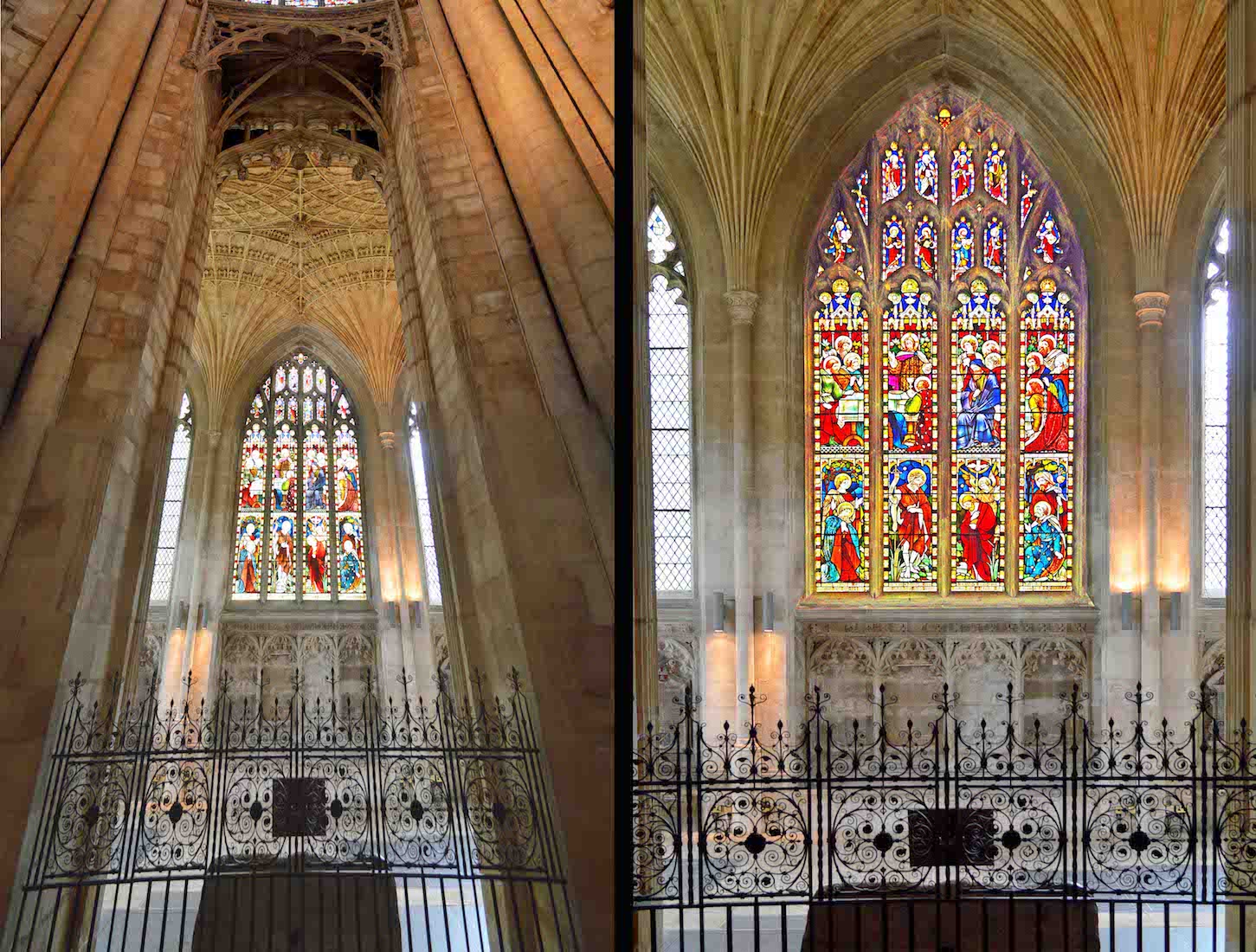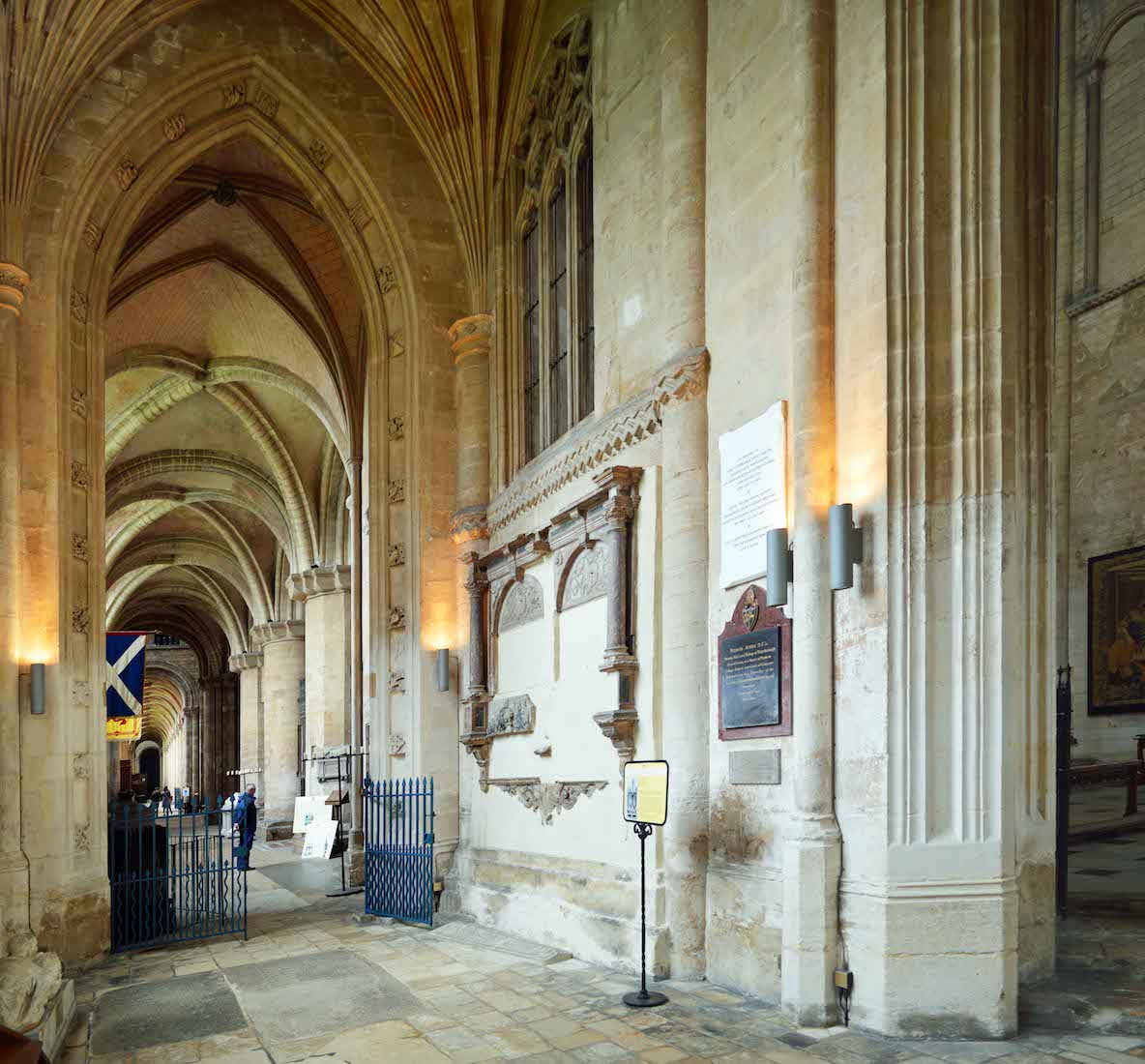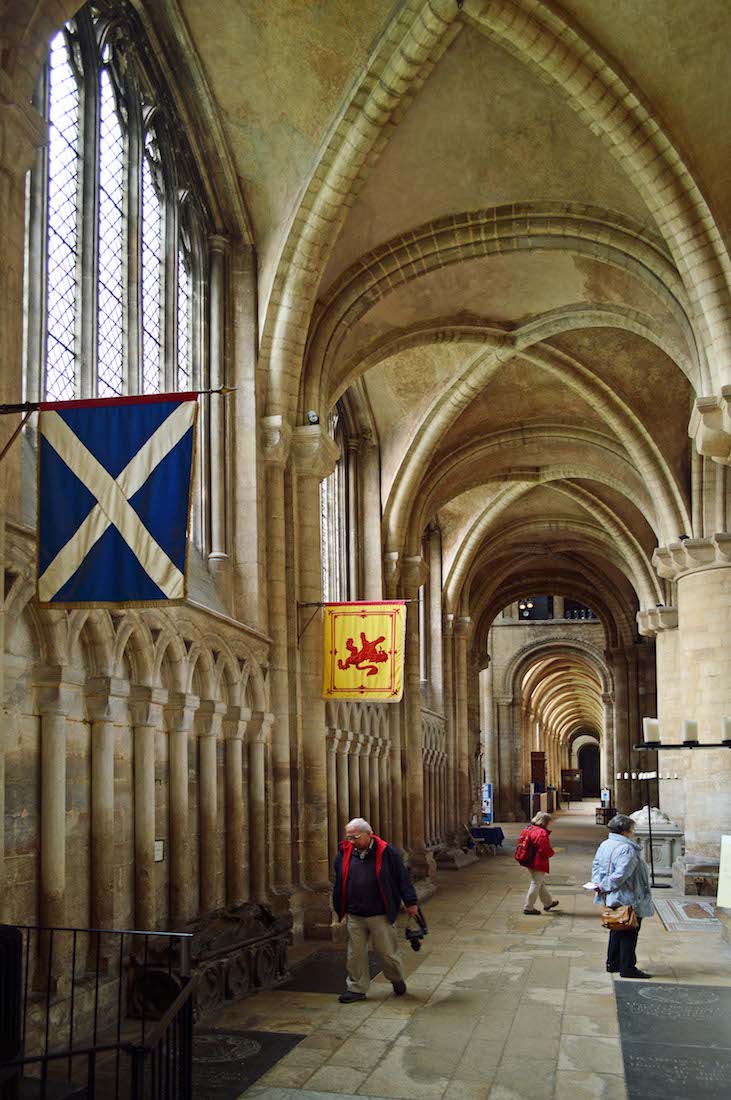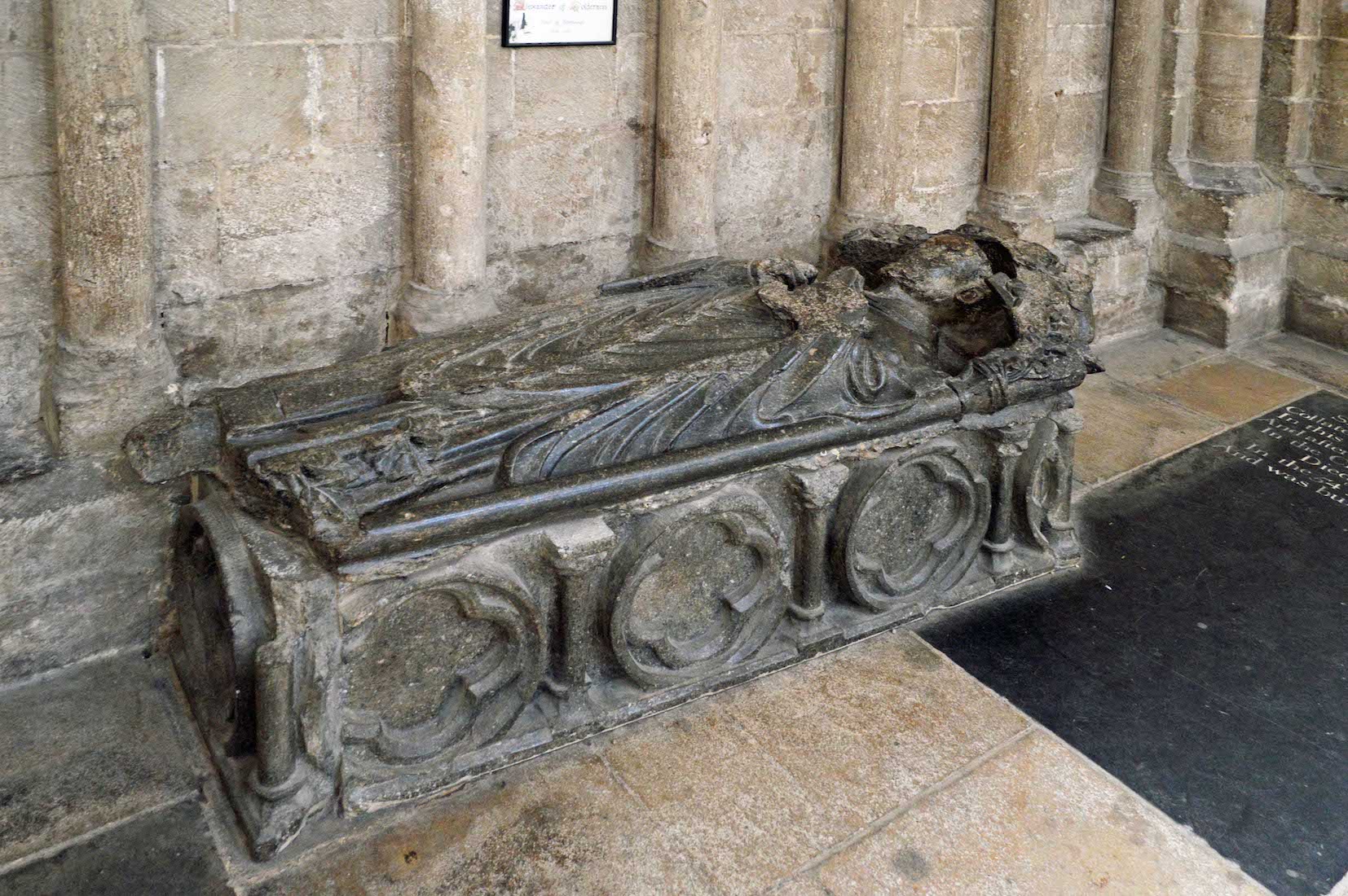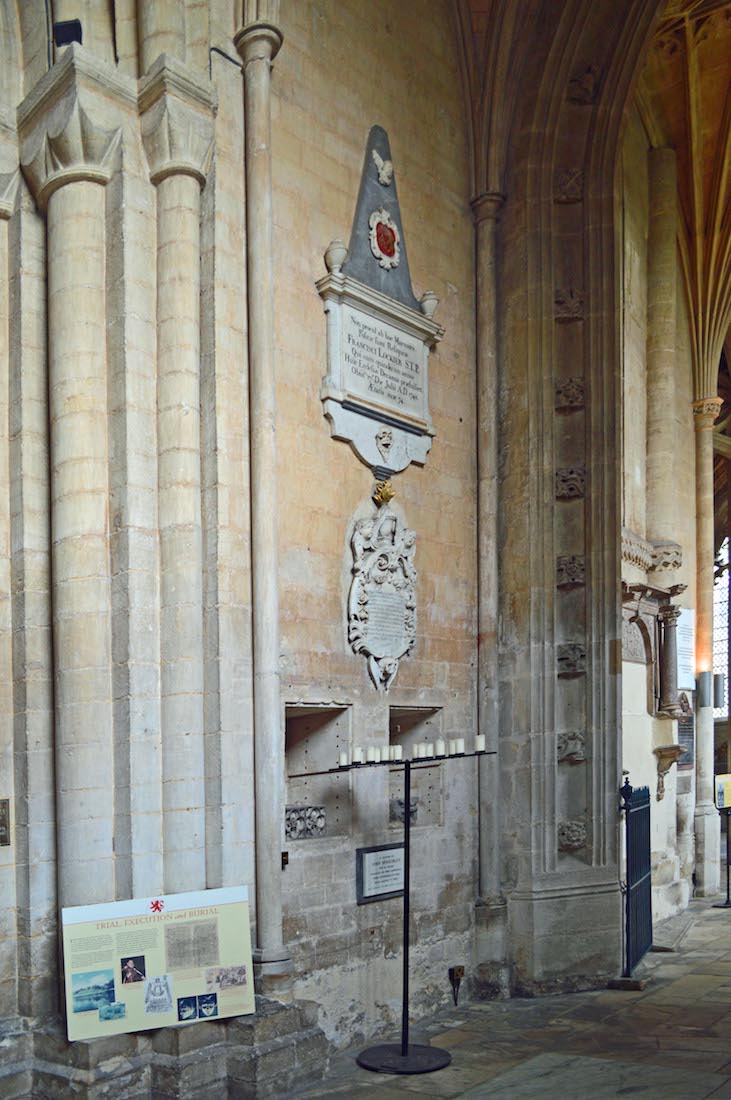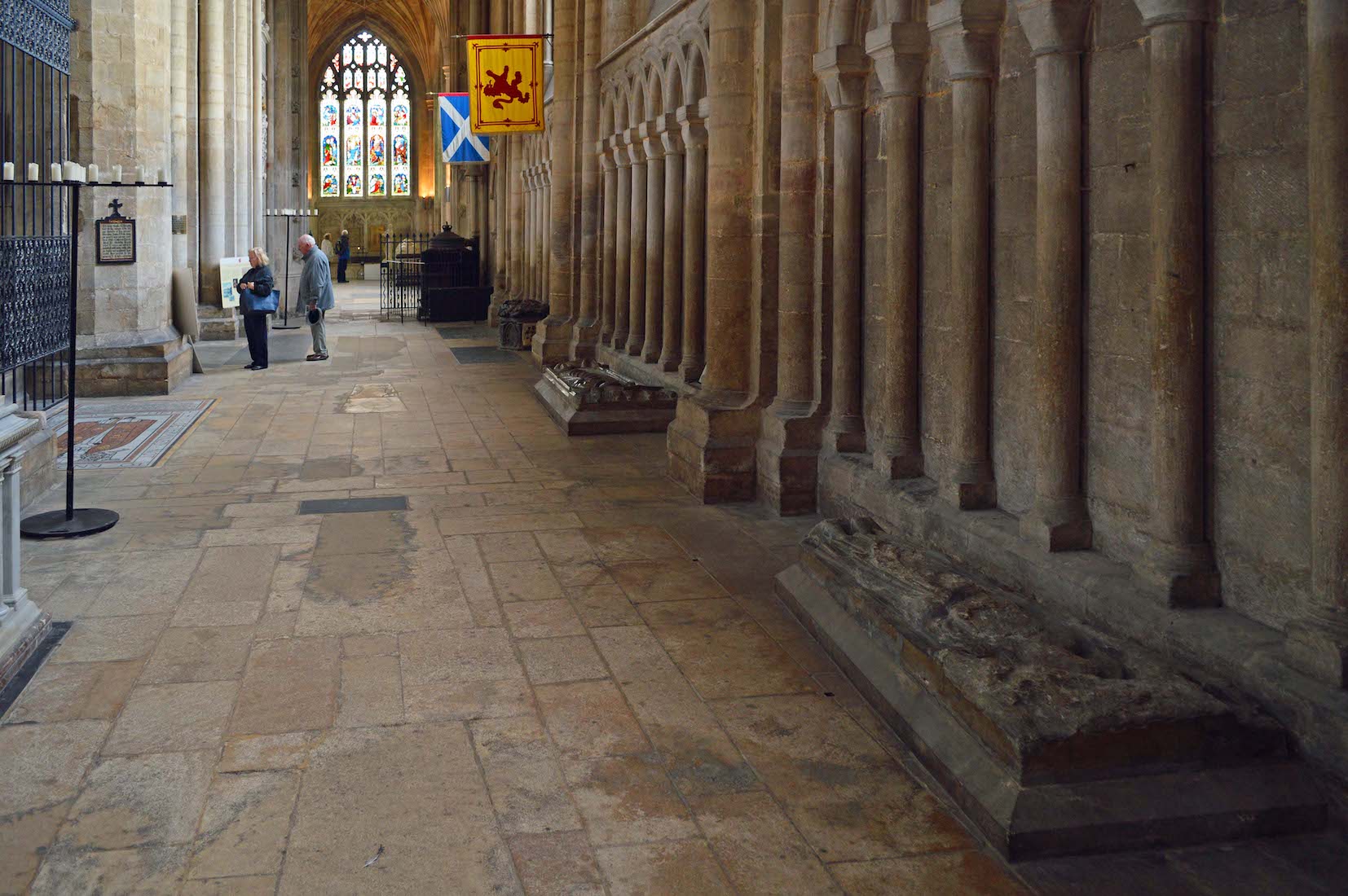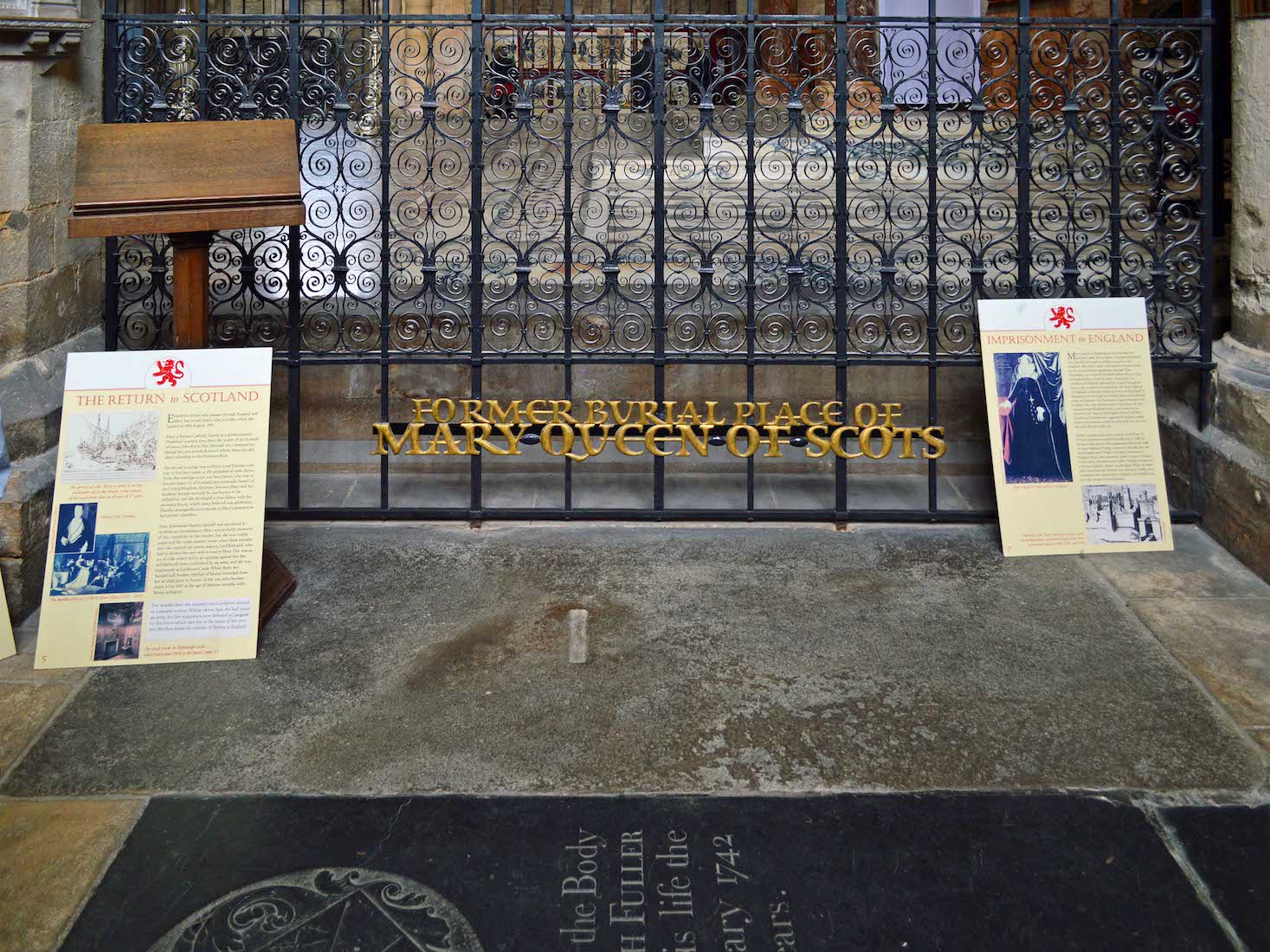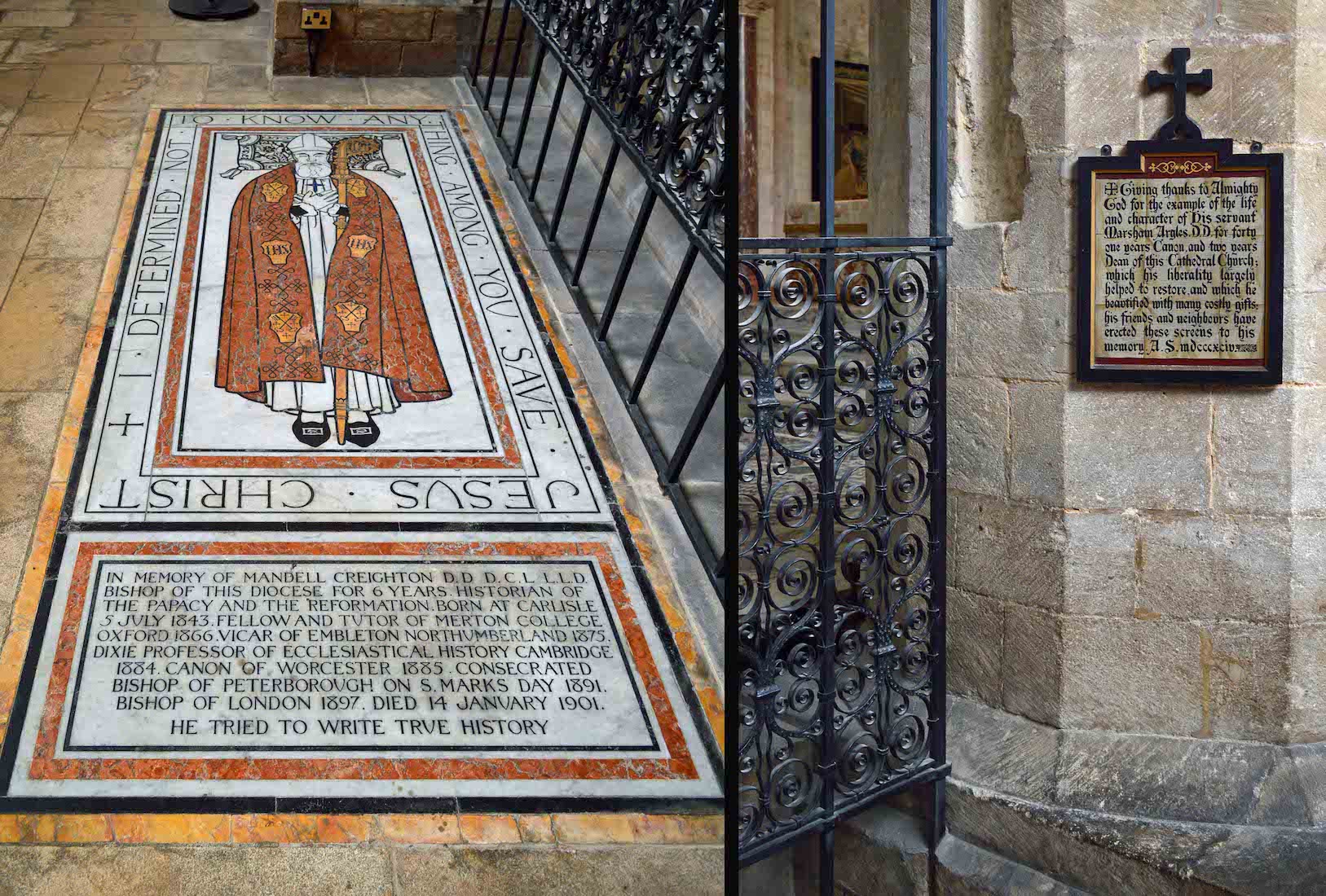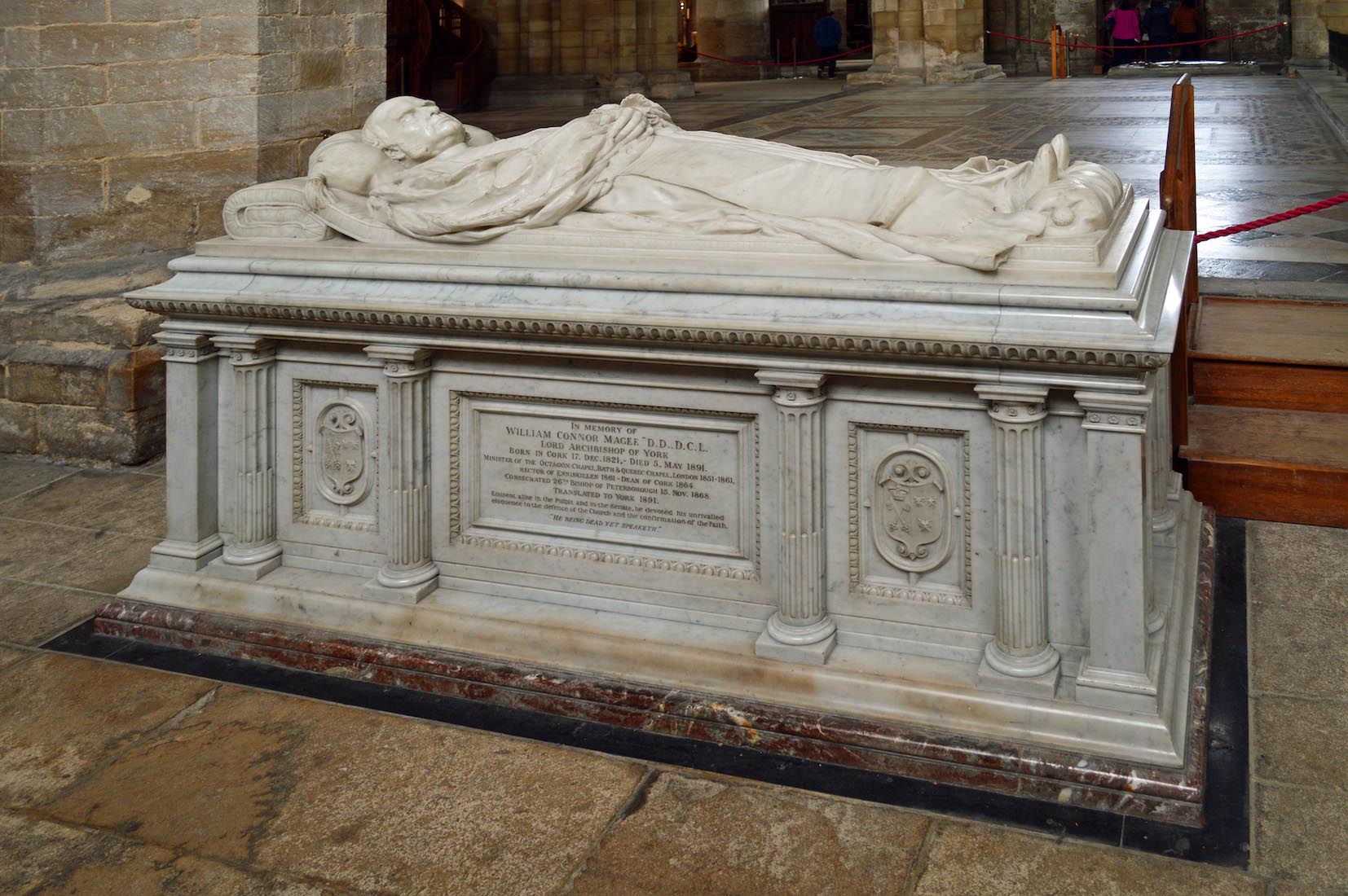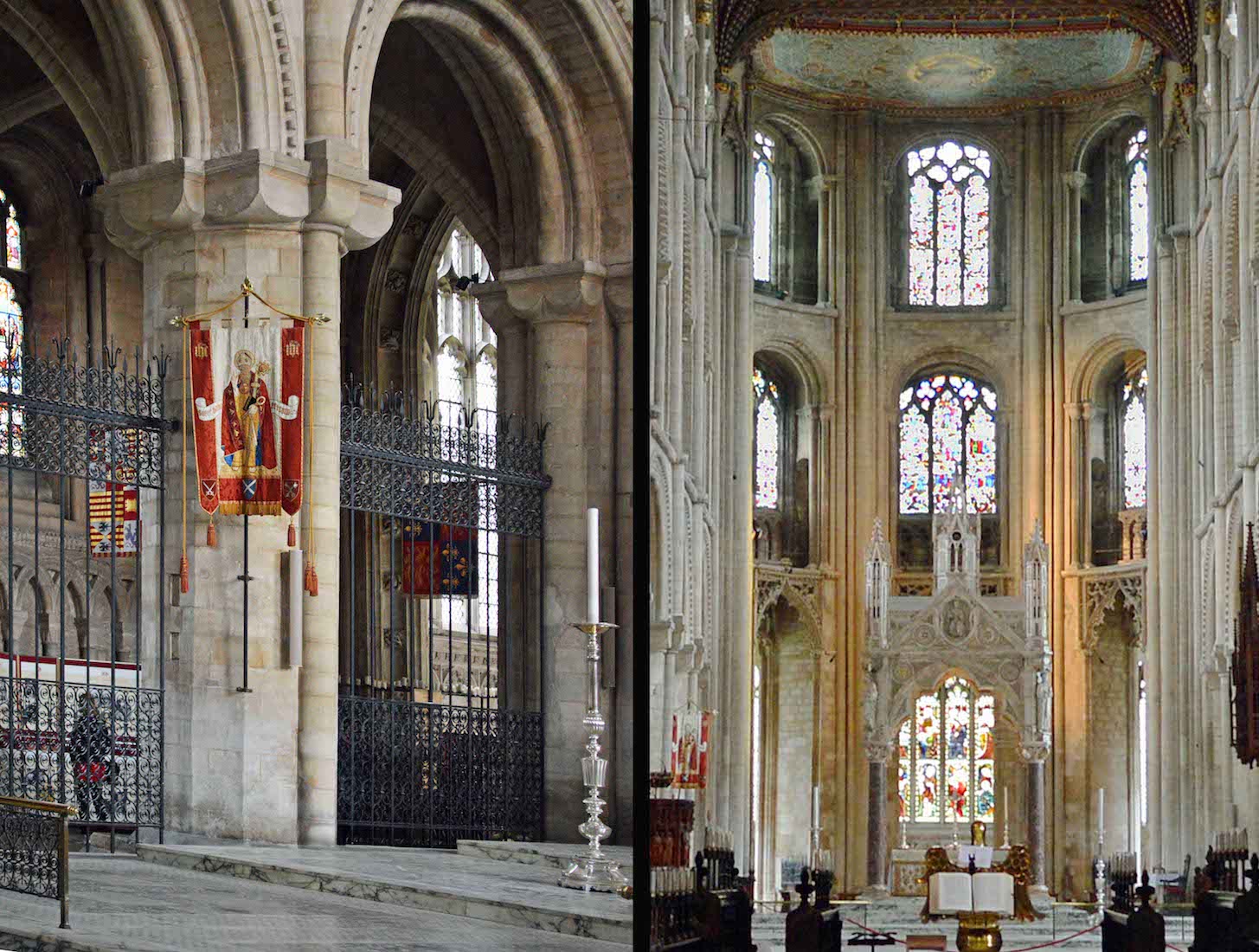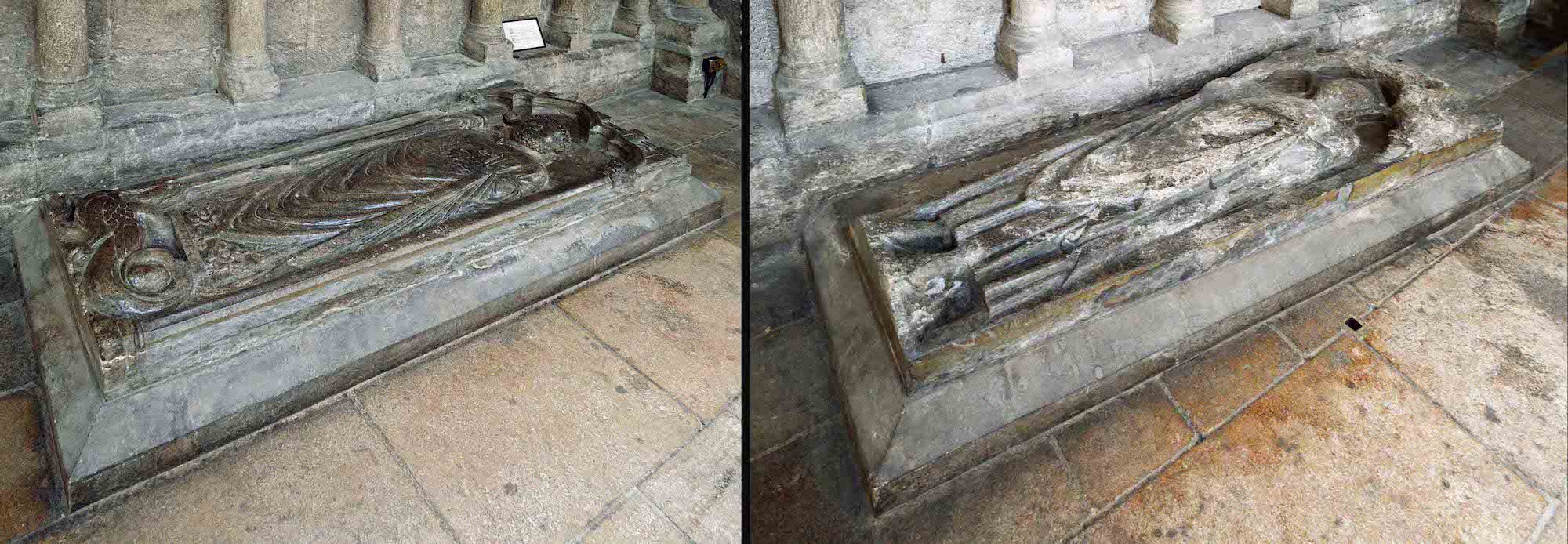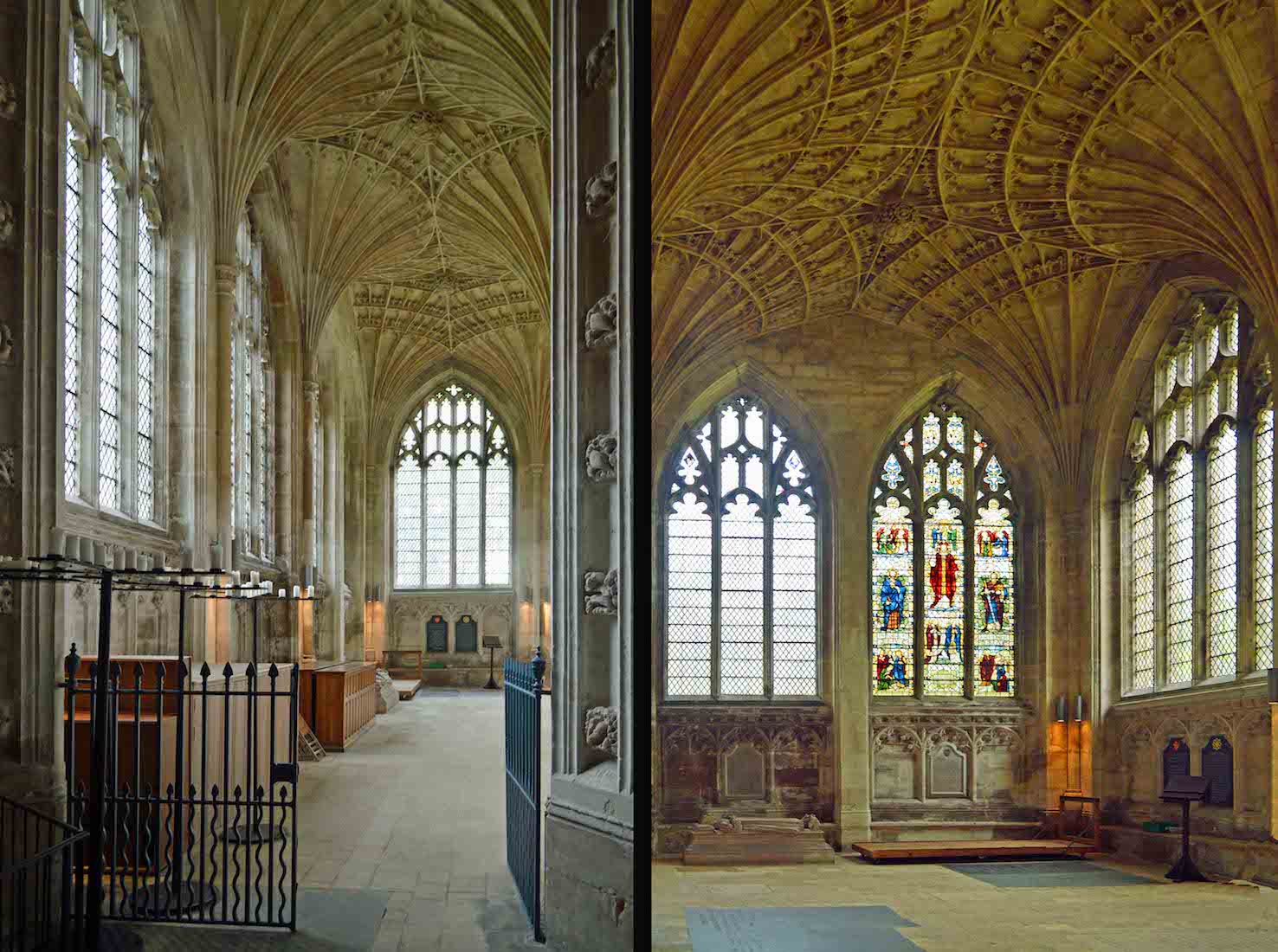
The North presbytery aisle finally runs into the Eastern ‘New Building’. There is one stained glass window here, an effigy, a few wall plaques and some stone markers in the floor. We catch our first glimpse too of the wonderful fan vaulting in this part of the Cathedral. PLAN
82. EFFIGY AND WINDOW
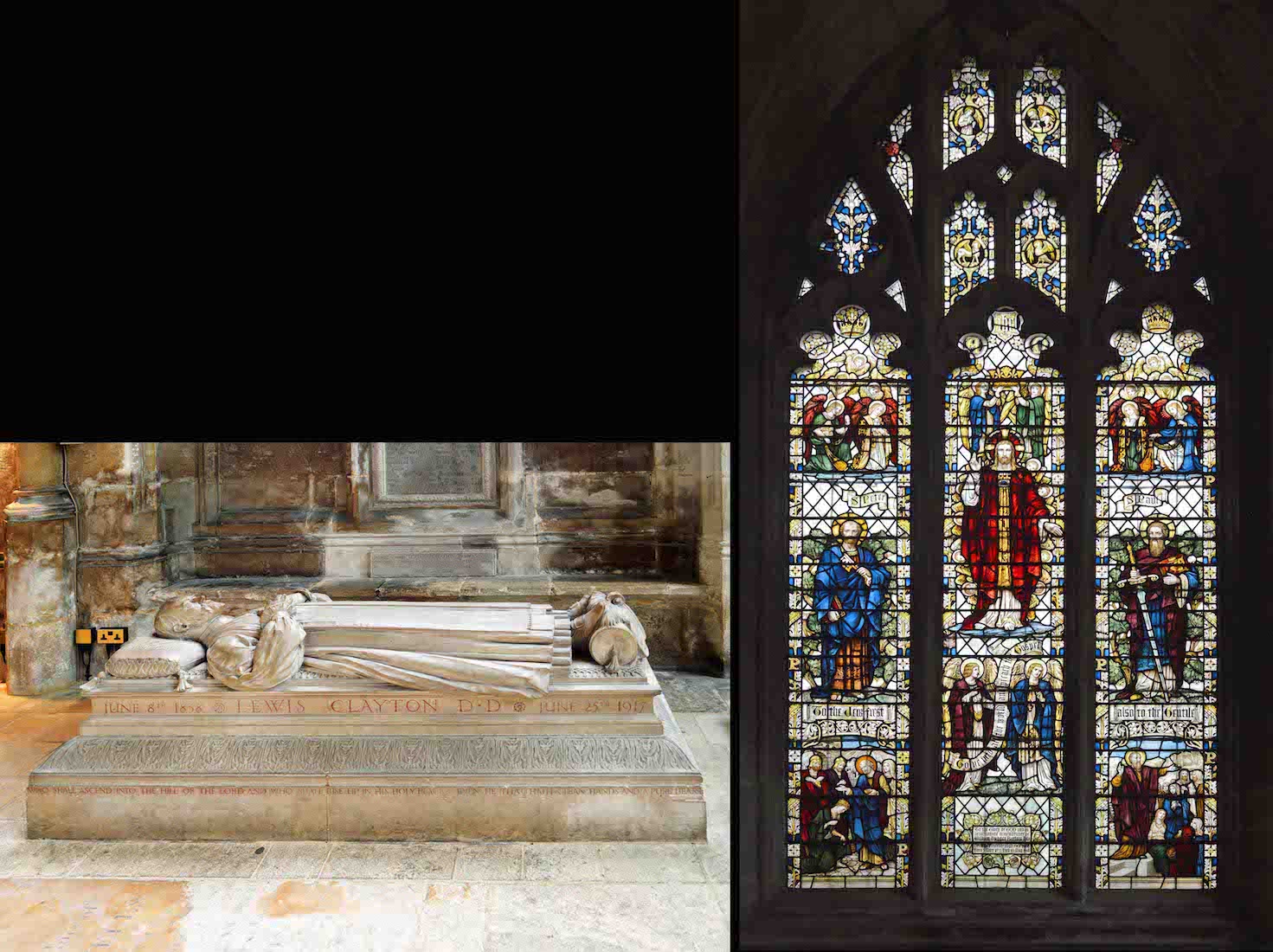
At left we see the effigy and tomb of Lewis Clayton. Lewis Clayton (1838 – 1917) was an Anglican bishop, the second Bishop suffragan of Leicester from 1903 until 1913. He was appointed assistant Bishop of Peterborough in 1913 until his death in 1917. The window shows St Peter and St Paul with the Glorified Christ at centre.
83. EAST WALL NORTH
The ‘New Building’ is really just a large rectangle linking the North and South presbytery aisles. If we stand in the middle and look to the Northeast we see these three windows, one of which has stained glass. The top four main scenes in the window at right depict the Last Supper with the text ‘Take, eat, this is my body which is broken for you’. The bottom four scenes show the baptism of Christ with the text ‘This is my beloved Son in whom I am well pleased.’
84. SOUTHEAST CORNER
Turning to the Southeast we find three more stained glass windows, a sculpted figure in the corner, and an effigy/tomb against the far wall. There are various memorial stones in the floor, and our eyes are again drawn to the wonderful fan vaulting.
85. THREE WINDOWS
The left window shows scenes leading to the Crucifixion along the bottom, with post-Resurrection scenes above. The middle window shows the baby Jesus being brought to Simeon in the Temple. Below are various early Peterborough churches. At right the lancets of the window illustrate King David, St John the Baptist, and St Paul.
86. OUR LADY AND EFFIGY
The figure in the corner shows the Madonna and Child, and is entitled ‘Our Lady of Lamentations’. This is a modern sculpture by Polly Verity. The effigy and tomb are for the Very Rev. William Clavell Ingram, who was an Anglican priest and the Dean of Peterborough from 1893 until his death in 1901.
87. THOMAS DEACON MEMORIAL
Thomas Deacon was married to Mary. He died in 1721 and is buried in Peterborough Cathedral. Thomas Deacon is remembered for founding the Thomas Deacon Academy (formerly Deacon’s School), an old-established Peterborough school.
88. WEST VIEW OF PRESBYTERY
From the centre of the New Building we can look West towards the high altar with its elaborate canopy. Beyond this our view looks right down the nave to the West window of the Cathedral. Above is a good view of the apse roof.
90. EASTERN VIEW OVER THE MONKS’ STONE
We can look back over the Monks’ stone to see the central East window framed by an arch.
91. SOUTH PRESBYTERY AISLE
In our tour of the Cathedral, we return to the New Building, and look West down the South presbytery aisle. A well worn effigy lies to our immediate left, but we shall proceed through the gates.
92. FURTHER DOWN THE AISLE
Beyond the metal gates we come to a couple of flags and an effigy on the left – in fact, possibly three! The two flags are Scottish: the red rampant lion, and the white on blue St Andrew’s cross. Our impression of the Cathedral having vast amounts of space, sparsely filled, seems to be continuing.
93. ALEXANDER OF HOLDERNESS TOMB
The first tomb on our left is easily identified. This effigy on a low tomb chest is thought to be Alexander of Holderness (d 1226), Benedictine abbot of Peterborough. First a monk, he then became a prior and finally abbot of Peterborough Abbey in 1222. Abbot for four years, he was noted for starting several building works, and for obtaining a flask said to contain the blood of St Thomas Becket, and other relics.
94. VARIOUS MEMORIALS
Opposite Alexander’s tomb, on the North side of the aisle, there are various memorials displayed. These include tablets in memory of Francisci Lockier, and John Speechley who was organist at the Cathedral for 50 years.
95. LOOKING BACK
Looking back to the East along this aisle, we see that there are indeed three effigies on the South window side, as well as some interesting items on the North side.
96. MARY QUEEN OF SCOTS
Opposite the two flags is the former burial place of Mary Queen of Scots. Mary, Queen of Scots (1542 – 1587), also known as Mary Stuart or Mary I of Scotland, was Queen of Scotland from 1542 to 1567 and Queen consort of France from 1559 to 1560. In her last years she was confined in various castles and manor houses in the interior of England. After eighteen and a half years in custody, Mary was found guilty of plotting to assassinate her cousin Queen Elizabeth I, and was subsequently beheaded.
97. CREIGHTON MEMORIAL, ARGLES PLAQUE
A little further along the aisle are two memorials. The memorial at left remembers Mandell Creighton, 1843 – 1901, who was a British historian and a bishop of the Church of England. He was Bishop of Peterborough, 1891 – 1896. The plaque at right is in memory of the Very Rev Marsham Argles (1814–1891), who was born in County Limerick in Ireland, and was the Dean of Peterborough Cathedral from 1891 until his death a year later.
98. WILLIAM MAGEE EFFIGY
Next on the North side is the effigy of William Connor Magee. Magee (1821 – 1891) was an Irish clergyman of the Anglican church, Archbishop of York for a short period in 1891. In 1868 the question of the disestablishment of the Irish Church came to the fore, and Magee threw himself into its defence with his usual energy and vivacity. The success of his orations caused Prime Minister Benjamin Disraeli to offer him the bishopric of Peterborough, England. We have already viewed his grave near the South transept.
99. APSE
Leaving the South aisle, we now move to the central apse, looking Eastwards to the high altar. A colourful banner hangs to the left depicting St Peter, dressed as a bishop and carrying the Keys of the Kingdom. Here too we catch our first glimpse of the high apse windows. The lower ground level window is one we have seen before in the New Building. There is a real genius in the cathedral construction here which unifies these windows into a single display.
100. TWO 13TH CENTURY EFFIGIES
These 13th century effigies are of Benedictine abbots that were found in the destroyed chapter house of Peterborough Cathedral. The abbots represented may be from an earlier time, as in the early 13th century Peterborough Abbey began to commission a series of commemorative effigies of their past Abbots. These effigies with the richness of ornament favoured by the Benedictines are amongst the best preserved of this type of effigy in England.


